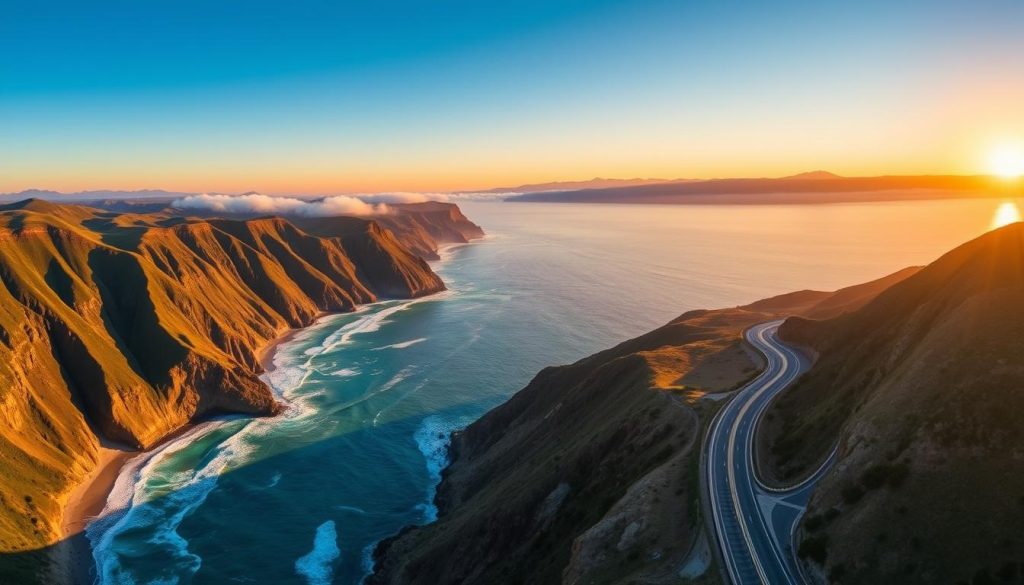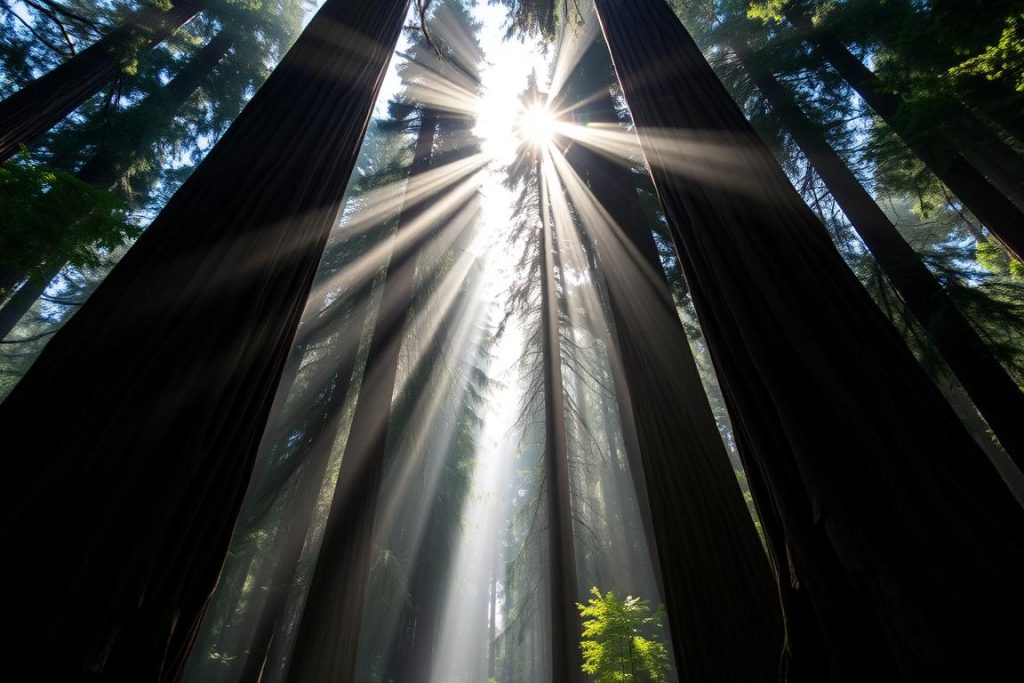West Coast Places to Visit
The West Coast of the United States offers some of the most diverse and breathtaking landscapes in the world. From the rugged Pacific coastline to ancient redwood forests, bustling cities to serene deserts, this region has something for every type of traveler. Whether you’re planning a road trip, a camping adventure, or a city escape, these ten destinations showcase the very best west coast places to visit for unforgettable experiences and stunning natural beauty.
Planning Your West Coast Adventure?
Download our free West Coast Camping Guide with insider tips on the best campgrounds, seasonal information, and essential gear for each destination.
1. Redwood National Park, California
Standing beneath the ancient giants of Redwood National Park is a humbling experience that should top any West Coast itinerary. Home to the tallest trees on Earth, some reaching heights of over 350 feet and ages exceeding 2,000 years, this park offers a glimpse into a primeval world that once covered much of the northern hemisphere.
The Lady Bird Johnson Grove and Big Tree area provide accessible trails for all skill levels, while more adventurous hikers can explore the Tall Trees Grove (permit required). For a unique experience, drive through the Chandelier Tree in nearby Leggett – one of the few remaining drive-through trees.
Best Time to Visit: May through September offers the driest weather, though summer fog creates magical scenes among the redwoods. Winter brings lush greenery and fewer crowds.
Camping Options: The park offers four developed campgrounds: Jedediah Smith, Mill Creek, Elk Prairie, and Gold Bluffs Beach. Reservations are strongly recommended during summer months.
For a less-crowded alternative, consider visiting Prairie Creek Redwoods State Park within the Redwood National and State Parks system, where you might spot Roosevelt elk grazing in the meadows.
2. San Francisco, California
No West Coast journey is complete without experiencing the charm of San Francisco. This iconic city packs incredible diversity into just 49 square miles, from world-famous landmarks to hidden neighborhood gems.
The Golden Gate Bridge stands as the city’s most recognizable symbol – walk or bike across for spectacular views of the bay, Alcatraz Island, and the city skyline. For the best photography spots, head to Battery Spencer or Baker Beach. In the city, ride the historic cable cars, explore the vibrant neighborhoods of North Beach (Little Italy) and Chinatown, and wander through the beautiful Golden Gate Park.
Must-See Attractions:
- Golden Gate Bridge and viewpoints
- Alcatraz Island (book tours well in advance)
- Fisherman’s Wharf and Pier 39 sea lions
- The colorful Victorian “Painted Ladies”
- The winding Lombard Street
Local Insights:
- Visit the Ferry Building Marketplace for local food
- Explore Golden Gate Park’s hidden gardens
- Take the ferry to Sausalito for a charming day trip
- Hike the Lands End Trail for stunning coastal views
- Visit Muir Woods just north of the city
While San Francisco has limited camping options within the city, the Presidio’s Rob Hill Campground offers a unique urban camping experience with views of the Golden Gate Bridge. For more traditional camping, head across the bridge to Marin County’s numerous campgrounds.
3. Yosemite National Park, California
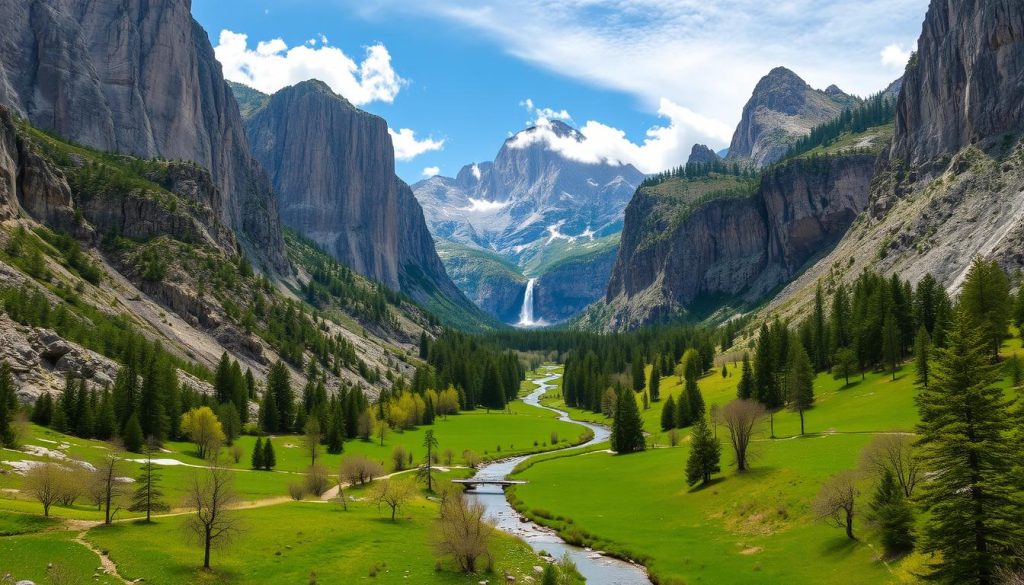
Yosemite National Park represents nature at its most magnificent – a place where massive granite monoliths, thundering waterfalls, and ancient sequoias create an outdoor paradise that has inspired artists, photographers, and adventurers for generations.
Yosemite Valley serves as the park’s centerpiece, where El Capitan and Half Dome tower above meadows and the meandering Merced River. The valley’s viewpoints, including Tunnel View and Glacier Point, offer postcard-perfect vistas that capture the essence of America’s natural splendor.
Waterfall Season: Visit in late spring (May-June) when snowmelt creates powerful displays at Yosemite Falls, Bridalveil Fall, and Nevada Fall. By late summer, many falls may slow to a trickle or dry up completely.
Avoiding Crowds: Yosemite receives over 4 million visitors annually, with summer being the busiest season. Consider visiting midweek or during shoulder seasons (April-May or September-October) for a more peaceful experience.
Beyond the valley, explore the ancient giant sequoias in Mariposa Grove, the alpine wilderness of Tuolumne Meadows, or embark on the challenging hike to Half Dome’s summit (permit required). For a unique experience, time your visit to witness the “firefall” phenomenon in February, when Horsetail Fall glows orange at sunset.
“Yosemite Valley, to me, is always a sunrise, a glitter of green and golden wonder in a vast edifice of stone and space.” – Ansel Adams
Yosemite offers 13 campgrounds, but they fill extremely quickly. Reservations open exactly 5 months in advance at 7:00 AM Pacific Time and typically sell out within minutes for summer dates. The Camp 4 walk-in campground operates on a lottery system during peak season.
Enhance Your West Coast Adventure
Get our exclusive campground finder tool with real-time availability updates for national parks and hidden gems along the West Coast.
4. Death Valley National Park, California
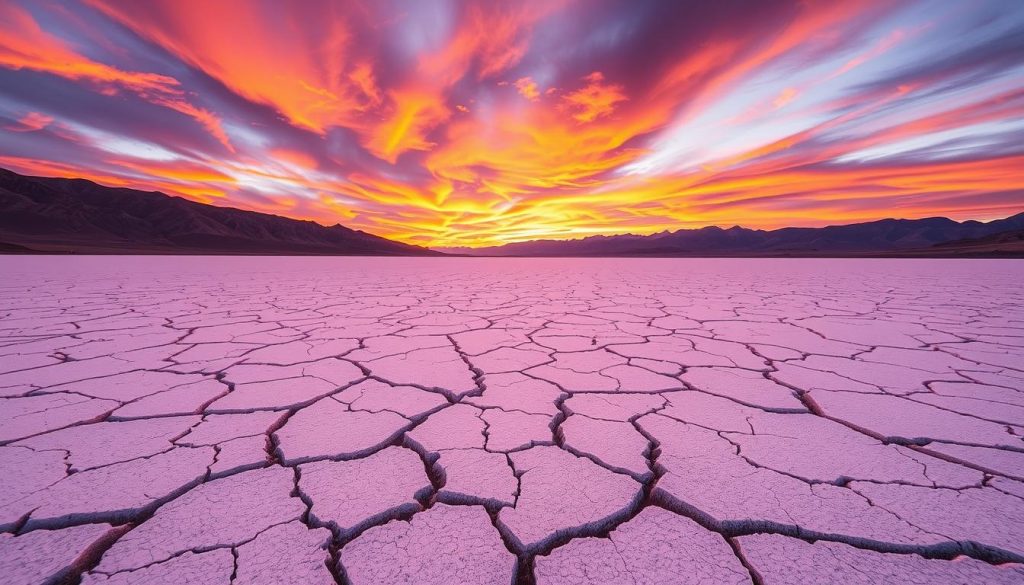
Contrary to its ominous name, Death Valley National Park offers some of the most surreal and captivating landscapes on the West Coast. As the hottest, driest, and lowest national park in the United States, Death Valley presents a world of extremes that must be experienced to be believed.
Badwater Basin, at 282 feet below sea level, features a vast salt flat with fascinating polygon patterns stretching toward distant mountains. Nearby, the colorful mineral deposits of Artist’s Palette create a natural canvas of pinks, greens, and purples against the barren landscape. For panoramic views, head to Dante’s View or Zabriskie Point, especially at sunrise or sunset when the changing light transforms the terrain.
Weather Warning: Summer temperatures regularly exceed 120°F (49°C), making Death Valley potentially dangerous from June through August. Winter and spring (November-April) offer pleasant temperatures for exploration. If visiting in summer, plan activities for early morning, carry abundant water, and ensure your vehicle is reliable.
Don’t miss the massive sand dunes near Stovepipe Wells, the mysterious moving rocks at the Racetrack Playa (high-clearance vehicle required), or the historic Scotty’s Castle (reopening in 2023 after flood damage repairs). For a truly magical experience, visit during a rare “super bloom” when spring rains trigger an explosion of wildflowers across the normally barren landscape.
Camping options include Furnace Creek Campground (reservations recommended October-April) and several first-come, first-served campgrounds. For comfort during extreme seasons, consider staying at The Oasis at Death Valley or Stovepipe Wells Village.
5. Seattle, Washington
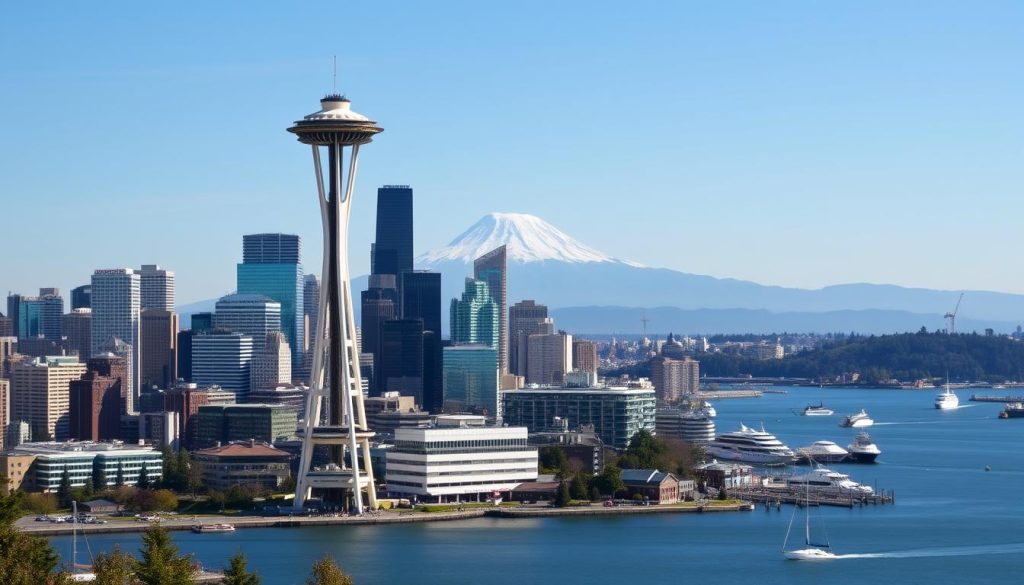
Seattle combines urban sophistication with easy access to breathtaking natural beauty, making it a perfect gateway to the Pacific Northwest. Known as the Emerald City for its lush greenery, Seattle offers a blend of cultural attractions, innovative cuisine, and outdoor adventures.
Begin your exploration at Pike Place Market, one of America’s oldest continuously operating farmers’ markets. Watch fishmongers toss fresh catches, sample local specialties, and visit the original Starbucks location. Nearby, the Seattle Waterfront provides views of Elliott Bay and access to the Seattle Aquarium and Great Wheel.
City Highlights:
- Space Needle and Seattle Center
- Pike Place Market and the Gum Wall
- Chihuly Garden and Glass museum
- Museum of Pop Culture (MoPOP)
- Pioneer Square historic district
Day Trips from Seattle:
- Mount Rainier National Park (2 hours)
- Olympic National Park (2-3 hours)
- Snoqualmie Falls (30 minutes)
- Bainbridge Island via ferry (35 minutes)
- Whale watching in the San Juan Islands
Seattle’s coffee culture extends far beyond Starbucks – explore local favorites like Victrola Coffee Roasters, Espresso Vivace, or Caffe Vita. The city also boasts a thriving craft beer scene, with numerous breweries offering tasting rooms and tours.
For camping near Seattle, consider Dash Point State Park (30 minutes south), Saltwater State Park, or venture further to the campgrounds in Mount Rainier National Park. The city also serves as an excellent starting point for exploring the Olympic Peninsula or heading north to the San Juan Islands.
6. Portland, Oregon
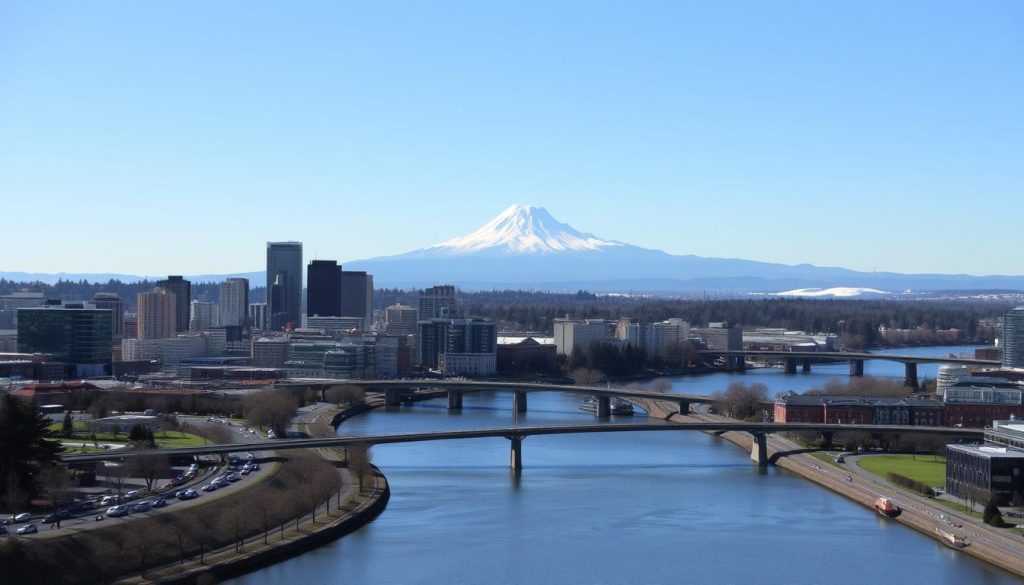
Portland embodies the quirky, independent spirit of the Pacific Northwest with its thriving food scene, abundant green spaces, and commitment to sustainability. This walkable city invites visitors to explore its distinct neighborhoods, each with its own character and charm.
Begin in downtown Portland at Pioneer Courthouse Square, the city’s living room, before wandering through the enchanting Portland Japanese Garden and adjacent International Rose Test Garden in Washington Park. Cross the Willamette River to explore the hip eastside neighborhoods like Alberta Arts District and Hawthorne Boulevard, where vintage shops, indie boutiques, and eclectic eateries showcase Portland’s creative energy.
Food Cart Culture: Portland pioneered the food cart pod concept, where clusters of mobile eateries offer diverse, affordable cuisine. Visit Cartopia, Hawthorne Asylum, or Portland Mercado for a taste of this local institution.
Tax-Free Shopping: Oregon has no sales tax, making Portland an excellent place for shopping at local boutiques, Powell’s City of Books (the world’s largest independent bookstore), or the Portland Saturday Market.
Nature is never far away in Portland. Forest Park, one of America’s largest urban forests, offers over 80 miles of hiking trails within city limits. The 4T Trail (Trail, Tram, Trolley, and Train) provides a unique way to experience Portland’s varied transportation and landscapes in a single loop.
For day trips, drive the scenic Columbia River Gorge to witness magnificent waterfalls like Multnomah Falls, visit the charming town of Hood River for windsurfing, or head to the Oregon coast (90 minutes west) for dramatic shorelines and quaint beach towns.
Camping options near Portland include Oxbow Regional Park (30 minutes east), Stub Stewart State Park (45 minutes west), or the year-round campground at Milo McIver State Park along the Clackamas River.
7. Big Sur, California
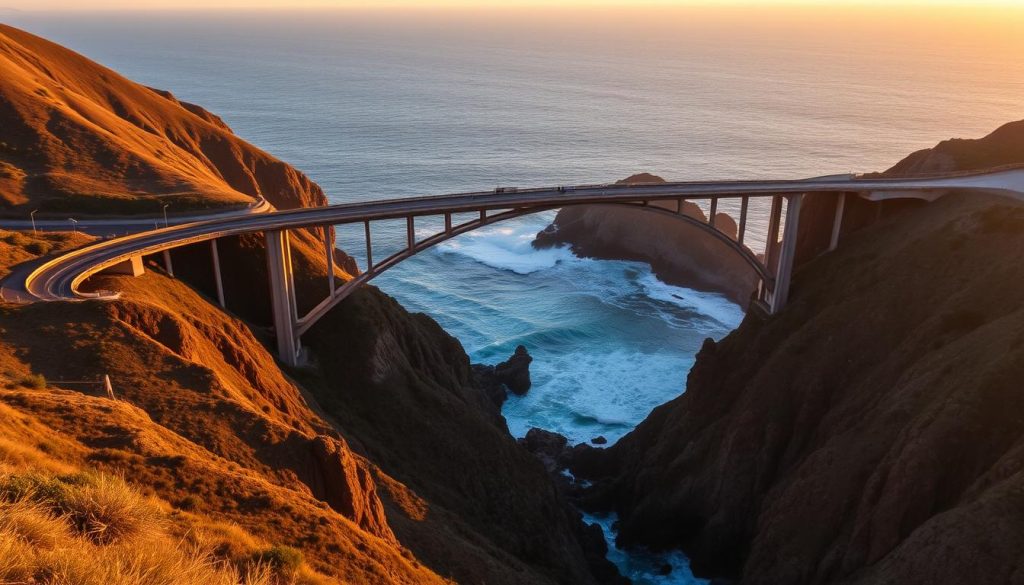
Big Sur represents the epitome of California’s dramatic coastline – a 90-mile stretch where the Santa Lucia Mountains plunge into the Pacific Ocean, creating one of the most scenic drives in the world. This remote region between Carmel and San Simeon offers a rugged wilderness experience with breathtaking vistas around every curve of Highway 1.
The iconic Bixby Creek Bridge stands as Big Sur’s most photographed landmark, its graceful arch spanning a deep canyon with the Pacific stretching to the horizon. Pull over at the numerous viewpoints along Highway 1 to capture the ever-changing coastal panoramas, especially at sunset when the light transforms the landscape.
“Big Sur is the California that men dreamed of years ago…the face of the earth as the Creator intended it to look.” – Henry Miller
Beyond the views, Big Sur offers remarkable natural attractions. Pfeiffer Beach’s purple sand and keyhole rock formation create a magical setting, especially when sunlight streams through the rock arch. Julia Pfeiffer Burns State Park features McWay Falls, one of California’s few tidefalls, where water cascades 80 feet onto a pristine beach. For a spiritual experience, visit the New Camaldoli Hermitage, perched on a hillside with panoramic ocean views.
Road Conditions: Highway 1 through Big Sur is susceptible to landslides and closures, especially during winter storms. Always check road conditions before traveling and have alternative routes planned. Cell service is extremely limited throughout the region.
Camping in Big Sur requires advance planning, as sites at Pfeiffer Big Sur State Park, Kirk Creek Campground (ocean views), and Julia Pfeiffer Burns State Park book months ahead. For a unique experience, consider glamping at Treebones Resort with its ocean-view yurts and human-sized “nest” accommodation.
8. Las Vegas, Nevada
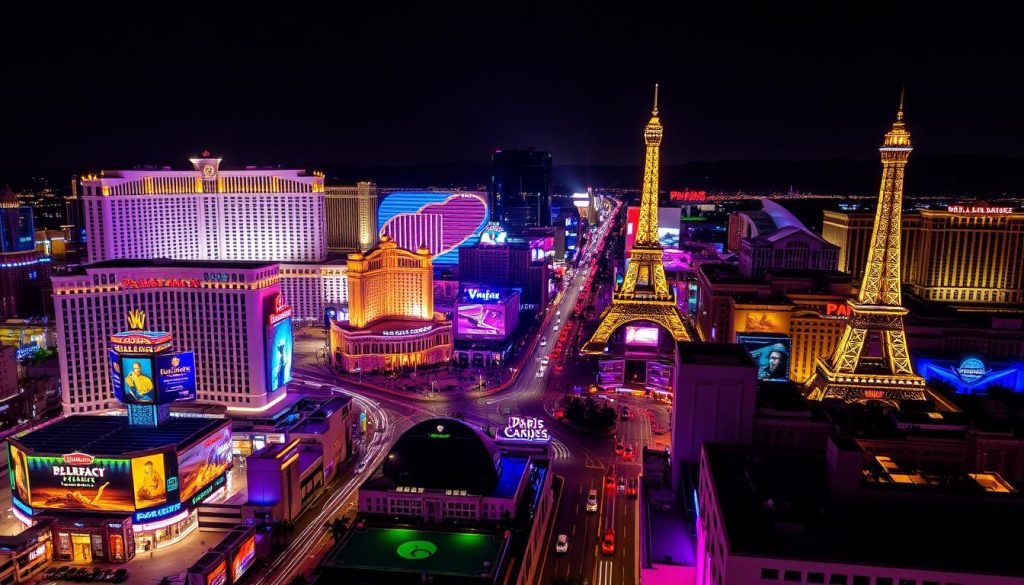
While Las Vegas might seem an unlikely addition to a West Coast nature itinerary, this desert metropolis serves as an excellent base for exploring the surrounding natural wonders while offering its own unique brand of entertainment. The contrast between Vegas’s neon landscape and the serene desert beyond creates a fascinating juxtaposition.
The famous Las Vegas Strip delivers sensory overload with its themed resorts, world-class dining, and spectacular shows. Wander through the elaborate hotel complexes like the Venetian’s canal shops, watch the Bellagio fountain show, or take in panoramic views from the High Roller observation wheel. For a glimpse of vintage Vegas, explore the Fremont Street Experience downtown.
Day Trips from Las Vegas:
- Red Rock Canyon (30 minutes)
- Valley of Fire State Park (1 hour)
- Hoover Dam (45 minutes)
- Grand Canyon West Rim (2.5 hours)
- Death Valley National Park (2 hours)
Outdoor Activities:
- Hiking at Mount Charleston (45 minutes)
- Kayaking on Lake Mead or Colorado River
- Mountain biking at Bootleg Canyon
- Rock climbing at Red Rock Canyon
- Stargazing tours in the desert
Red Rock Canyon National Conservation Area offers a perfect escape just 17 miles from the Strip. Drive the 13-mile scenic loop, hike among the vibrant sandstone formations, or try rock climbing on world-class routes. For a longer adventure, Valley of Fire State Park showcases 40,000 acres of red Aztec sandstone outcrops, ancient petrified trees, and 2,000-year-old petroglyphs.
Camping options near Las Vegas include developed campgrounds at Red Rock Canyon and Valley of Fire, or Lake Mead National Recreation Area for waterfront sites. For a unique experience, consider the yurts at McWilliams Campground in the Spring Mountains, where cooler temperatures provide relief from desert heat.
9. San Diego, California
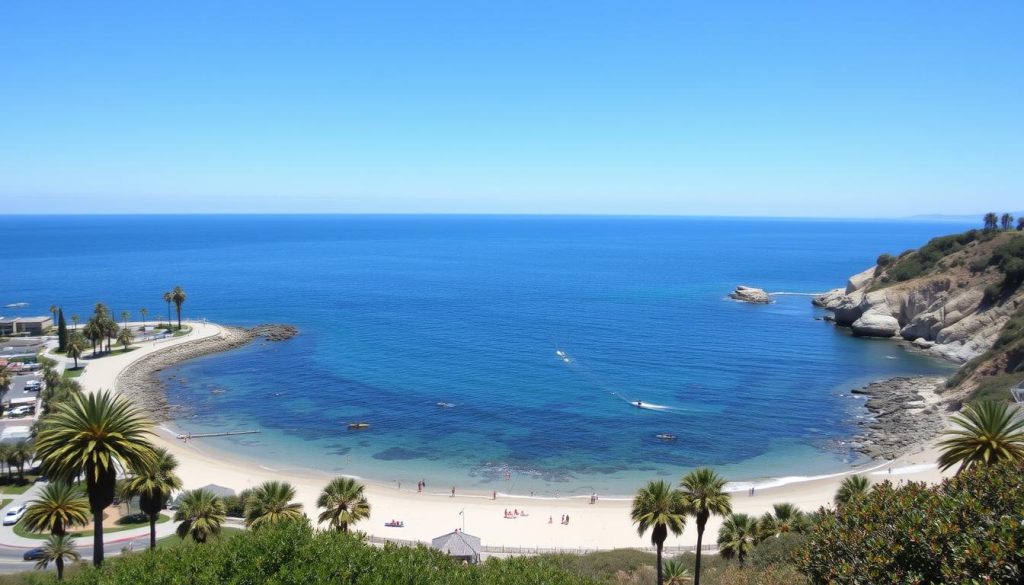
San Diego offers the quintessential Southern California experience with its perfect climate, 70 miles of pristine beaches, and laid-back coastal culture. This southernmost California city combines urban attractions with outstanding natural beauty and outdoor recreation.
Begin your San Diego adventure in Balboa Park, a 1,200-acre cultural oasis housing 17 museums, beautiful gardens, and the renowned San Diego Zoo. The historic Gaslamp Quarter downtown offers Victorian architecture and vibrant nightlife, while Old Town provides a glimpse into San Diego’s Spanish and Mexican heritage.
Beach Guide: Each San Diego beach has its own character. Coronado Beach offers powdery sand and the iconic Hotel Del Coronado. La Jolla Cove provides protected swimming and snorkeling with sea lions. Mission Beach features a classic boardwalk atmosphere, while Torrey Pines State Beach sits beneath stunning cliffs with hiking trails above.
Water activities abound in San Diego’s protected bays and open ocean. Try surfing at Pacific Beach, kayaking through the La Jolla sea caves, paddleboarding in Mission Bay, or whale watching (gray whales in winter, blue whales in summer). The tide pools at Cabrillo National Monument reveal fascinating marine ecosystems during low tide.
For day trips, explore the charming beach towns of North County, visit the flower fields of Carlsbad (spring), or head to Anza-Borrego Desert State Park for wildflower blooms and stargazing. Wine enthusiasts can explore the vineyards of Temecula Valley, just an hour north.
Camping options include San Elijo State Beach and South Carlsbad State Beach for oceanfront sites (reserve well ahead for summer), Silver Strand State Beach, or the campgrounds in nearby Cleveland National Forest for a mountain experience.
10. Grand Canyon National Park, Arizona
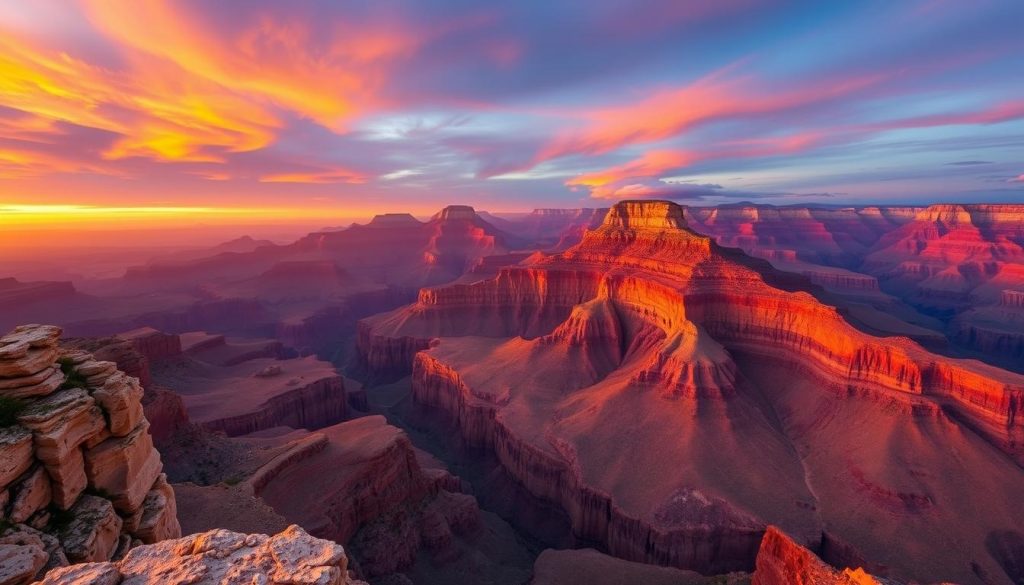
While technically just beyond the West Coast in Arizona, the Grand Canyon’s proximity and magnificence make it an essential addition to any western U.S. itinerary. This natural wonder stretches 277 miles long, up to 18 miles wide, and over a mile deep, revealing two billion years of Earth’s geological history in its exposed rock layers.
Most visitors experience the Grand Canyon from the South Rim, which offers numerous viewpoints accessible by car or the park’s free shuttle system. For the classic first view, head to Mather Point near the Visitor Center, then explore other perspectives at Yavapai, Hopi, and Desert View points. The less-visited North Rim (open May-October) provides a different perspective from 1,000 feet higher elevation and typically sees just 10% of the park’s visitors.
“The Grand Canyon fills me with awe. It is beyond comparison—beyond description; absolutely unparalleled throughout the wide world.” – Theodore Roosevelt
While many visitors simply admire the canyon from its rim, venturing below the edge reveals the true scale and beauty of this landscape. The Bright Angel and South Kaibab trails offer day hiking opportunities with incredible views (remember that hiking down requires hiking back up, often in extreme heat). For the ultimate Grand Canyon experience, consider a multi-day backpacking trip or a rafting adventure on the Colorado River through the canyon’s heart.
Hiking Safety: Grand Canyon hiking can be extremely challenging due to steep terrain, high elevation, and extreme temperatures. Never hike to the river and back in one day during summer. Carry ample water, salty snacks, and sun protection. Start early, rest often, and be prepared to turn around.
Camping options include the developed Mather Campground on the South Rim and North Rim Campground (reservations essential), or backcountry camping with permits. For a unique experience, consider the historic Phantom Ranch lodging at the canyon bottom (reservations available by lottery 15 months in advance).
Ready to Explore the West Coast?
Subscribe to our newsletter for seasonal camping updates, trail conditions, and exclusive guides to the best outdoor experiences along the Pacific Coast.
Plan Your West Coast Adventure
The West Coast offers an incredible diversity of landscapes and experiences that could fill a lifetime of exploration. From ancient forests to stark deserts, vibrant cities to remote coastlines, these ten destinations represent just the beginning of what this magnificent region has to offer.
When planning your trip, consider the vast distances between destinations – a comprehensive West Coast journey requires at least two weeks, though focusing on specific regions allows for shorter, more manageable trips. The best times to visit depend on your destinations: summer offers ideal conditions for northern areas like Washington and Oregon, while spring and fall provide pleasant temperatures for desert regions like Death Valley and the Grand Canyon.
Whether you’re pitching a tent beneath redwood giants, hiking along dramatic coastal cliffs, or exploring the cultural riches of West Coast cities, this region promises unforgettable experiences and landscapes that will call you back again and again. Start planning your West Coast adventure today!
Explore More West Coast Adventures
Discover our complete collection of camping guides, trail recommendations, and outdoor adventures for all the best west coast places to visit.
